At some point during the process of falling in love with this light, I posted a picture of it on Instagram, to which my friend Eric from Gardenfork replied, “You know you can make that, right?” So I watched Eric’s video on making an industrial pendant light and set to work sourcing the parts.
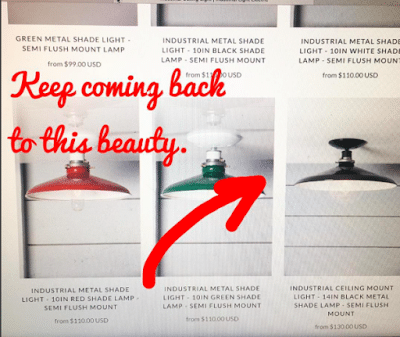 |
| My Instagram post showing the $130 inspiration light that I recreated for $60. |
I had a sneaking suspicion that it probably wasn’t that hard to make some light fixtures, but my concern was knowing what parts I needed. And since I would have to order most of them online, I didn’t want to end up in a situation where I’d order things I didn’t need or fail to order something important. Eric’s video helped with that part and then I went to the Gardenfork Facebook discussion group (a group hosted by Eric for discussing DIY projects, gardening stuff, and tons more), posted the list of the parts I was planning to buy and asked someone who had a clue to check my list to make sure I had everything. Eric was nice enough to reply and I had to swap out one item, but from there it was off to the races. In the end, I was able to recreate the inspiration light for less than half the price!
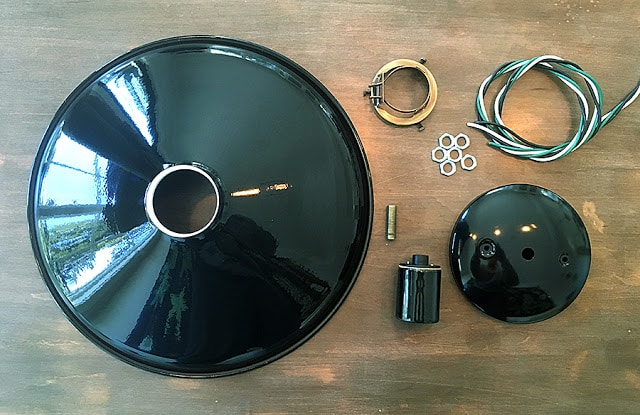 |
| The parts you need to make this light, clockwise from the left: Metal shade, brass shade fitter/clamp, nut, electrical wire, ceiling canopy, porcelain socket, threaded nipple. |
Here are the parts I ordered (links take you to where I ordered them from but there are lots of places to order these things from):
- Black metal lampshade 12″ $46.29
- Black canopy (the thing that covers the electrical bits in the ceiling) $3.50
- Clamp on shade fitter/holder (the part that holds the shade to the socket) $4.85
- Porcelain socket (the electrical bit/where you screw in the light bulb) $4.80
- Electrical wire $.60/foot (I figured on about a foot per light)
- Threaded hollow nipple. We reused the ones from the old lights but we could have purchased them for 38 cents.
- A nut that fits that nipple (purchased locally)
- A canopy “kit” if necessary. This includes the metal piece that stretches across the hole in the ceiling where the electrical comes out (maybe this is called a junction box, but the fact that I made these lights with no concept of what these parts are called ought to reassure you that you can do this) and bolts to screw into. Again, we were able to reuse the old parts from the previous fixtures.
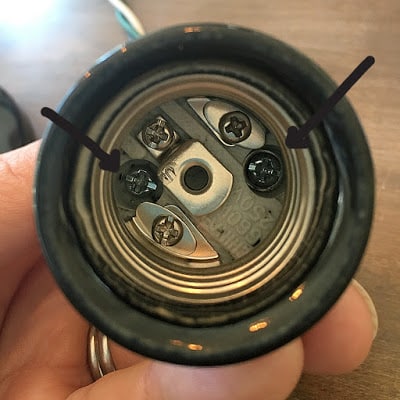 |
| This is the bottom of the socket where the light bulb screws in. The only thing you need to worry about on this end is loosening the screws to allow the cap of the |
Next, wrap the green ground wire around the green screw in the same fashion. This screw is larger, so you can make a hook with the wire and sort of wrap it around the screw before tightening.
When it’s on it should look like this:
Now take a deep breath because you’ve done the hard bit. Next you want to feed the wires through the canopy and push the nipple through the hole (there will be no snickering, thank you very much).
Use a nut to secure the canopy tight to the socket.
Then wire it to the existing electrical box like you would any other light. Mount the canopy onto the metal holder on the junction box to secure the light to the ceiling.
And that’s it … a light that, as far as I can tell, is identical to one you can buy, except mine cost $60 and the inspiration light was $130.
Here’s the inspiration:
And here’s mine:

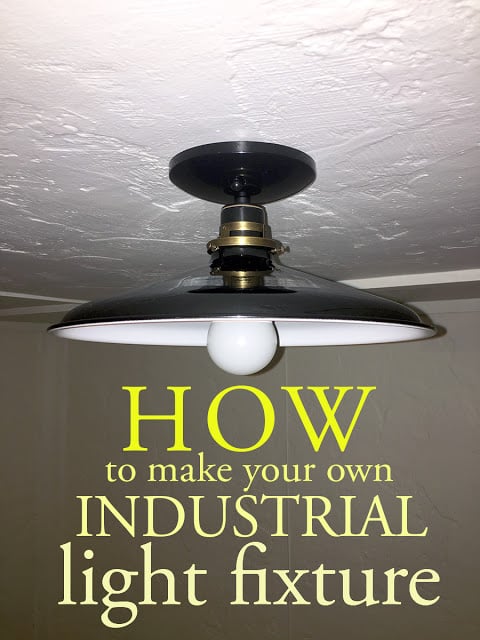
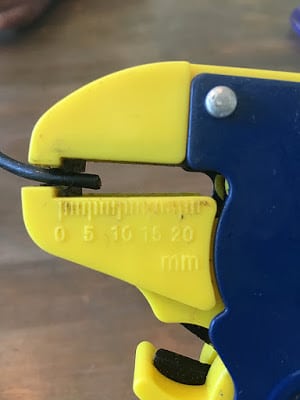
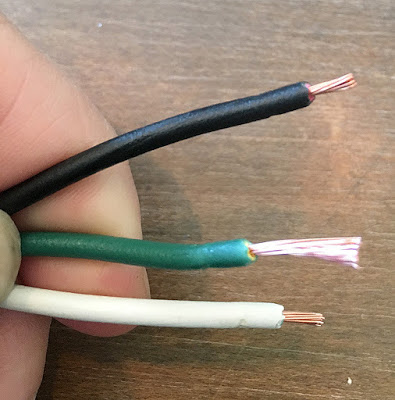
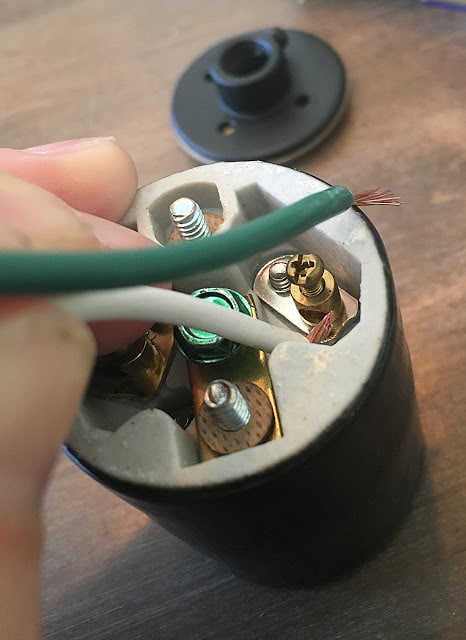
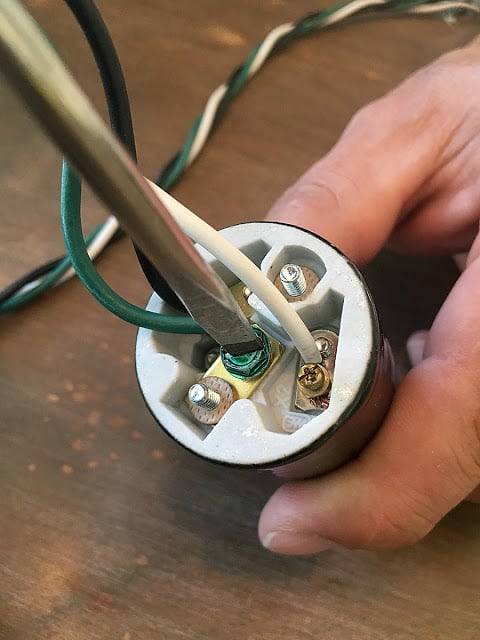
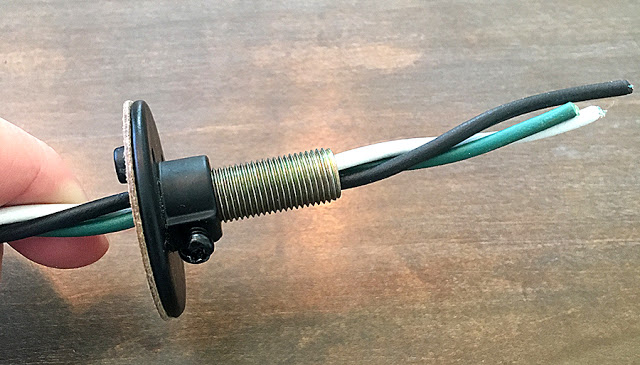
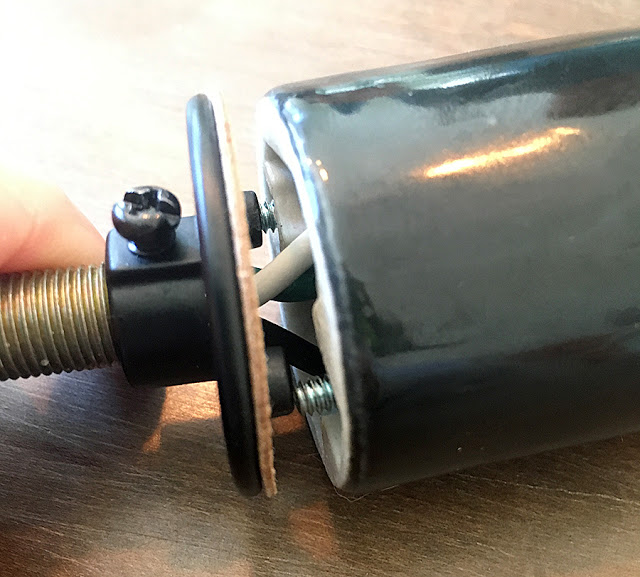
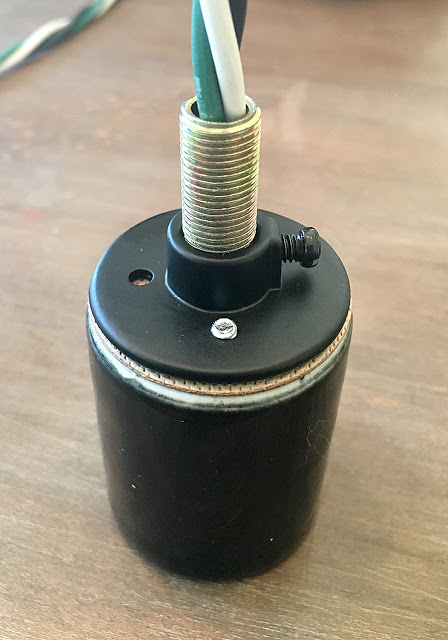

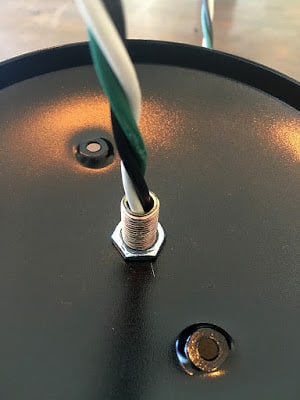
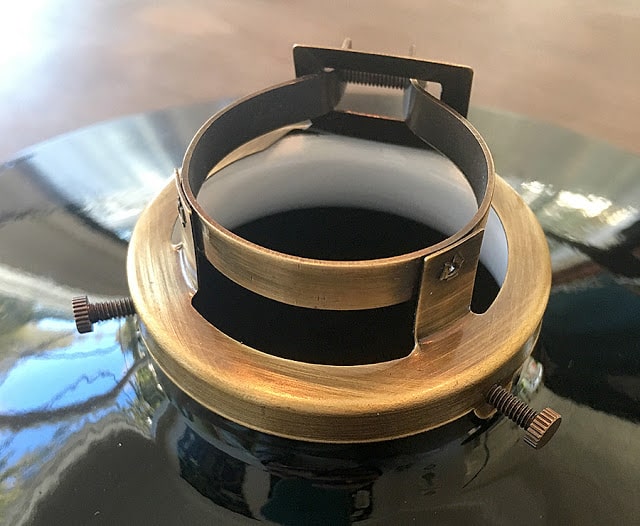
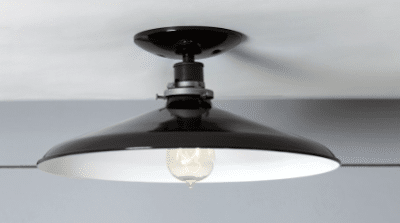
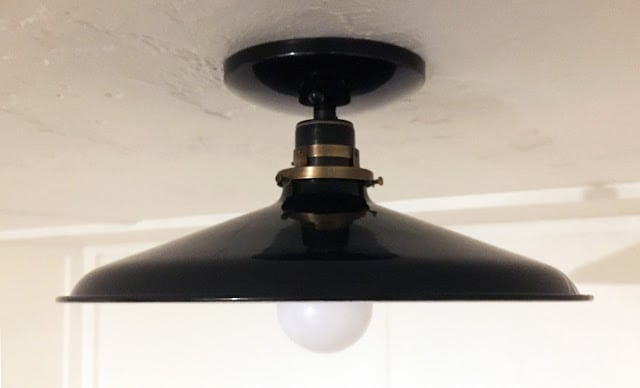
6 Responses
Yours is even cooler. :o) Well done, you!
You DID it!! LOVE! I'm very tempted to make a few for our cottage in Maine. xoxo
I am very impressed!
Looks great but I can't imagine doing this. You are as gutsy as you are creative. Our basement ceiling is quite low so our remodel will need recessed lights of some kind. Probably just fluorescent as it will mainly be work space (drawing and wood shop) and storage space.
Well, doesn't that make you feel good? It looks great too.